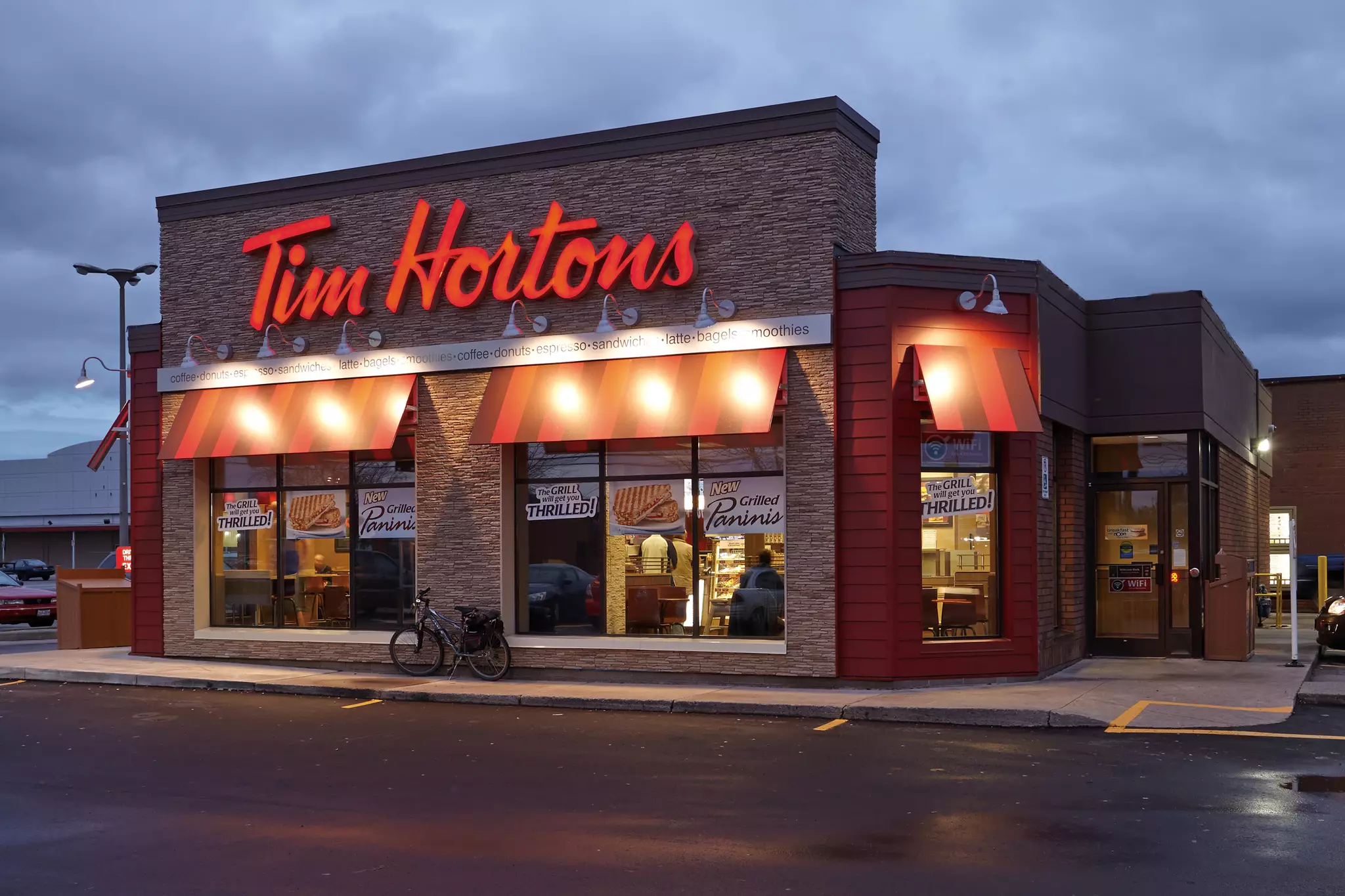Tim Hortons, affectionately known as “Timmies” or “Hortons” to Canadians, is more than just a coffee shop; it’s a cultural touchstone deeply woven into the fabric of Canadian life. From its humble beginnings in 1964 to its current status as a multinational behemoth, Tim Hortons has captured hearts (and taste buds) across the globe.
The story of Tim Hortons begins with its namesake, hockey legend Tim Horton. In 1964, Horton partnered with Ron Joyce to open their first coffee shop in Hamilton, Ontario. The shop focused on two key offerings: fresh, affordable coffee and delicious donuts. This simple formula resonated with Canadians, and Tim Hortons quickly became a national phenomenon.
In a move that sent shockwaves through the fast food world, Burger King and Tim Hortons, two iconic brands from opposite sides of the Atlantic, joined forces in a $11.4 billion USD love affair on August 26, 2014. This unprecedented union wasn’t just about burgers and coffee; it was the birth of a global powerhouse, Restaurant Brands International (RBI), headquartered in the heart of Toronto, Canada.
The newly formed RBI, led by the shrewd Brazilian investment firm 3G Capital, became the proud parent of these two beloved brands on December 15, 2014. With this strategic merger, a unique opportunity arose: to combine the king of burgers with the undisputed champion of Canadian coffee, promising a global empire built on deliciousness and convenience.
More Than Just Coffee:
While coffee remains the backbone of Tim Hortons, the company has expanded its menu over the years to include a variety of breakfast items, sandwiches, wraps, and baked goods. The iconic “Timbits,” bite-sized donut holes, are a beloved menu staple enjoyed by Canadians of all ages.
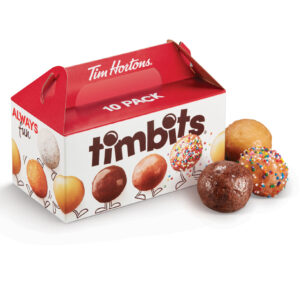
Tim Hortons transcends its role as a coffee shop. It’s a place where Canadians gather to socialize, catch up with friends, and start their day. The ubiquitous red and white colors of the brand are instantly recognizable, and the coffee cups themselves have become collectors’ items.
Global Expansion:
Tim Hortons’ popularity has extended beyond Canada’s borders. The company now boasts over 5,600 locations across the globe, spanning countries like the United States, India, and the Philippines. While adapting to local tastes and preferences, Tim Hortons remains true to its core values of providing quality coffee and friendly service.
A Legacy of Giving Back:
Tim Hortons is deeply committed to giving back to the communities it serves. The Tim Hortons Foundation supports youth programs, healthcare initiatives, and environmental projects. This dedication to social responsibility further strengthens the brand’s positive image and its connection to Canadians.
Tim Hortons: A Canadian Icon with a Global Future:
From its humble origins to its current status as a global coffee giant, Tim Hortons has left an undeniable mark on Canadian culture. It’s a place where people connect, share moments, and experience a little bit of Canadian hospitality. As the brand continues to expand its reach, one thing remains certain: the legacy of Tim Hortons, the hockey player who built a coffee empire, will continue to inspire Canadians and coffee lovers around the world.
Marketing Strategies of Tim Hortons
1. Branding
Tim Hortons leverages branding as a powerful marketing strategy to position itself as a “home away from home” for its customers. This is achieved through various branding elements that evoke warmth, comfort, and a sense of community.
Creating a Welcoming Atmosphere:
The Tim Hortons logo, a red oval with the brand name in white script, is instantly recognizable and synonymous with comfort. The warm and inviting interiors, featuring comfortable seating and free Wi-Fi, further reinforce this feeling of homeliness. This welcoming ambiance encourages customers to linger, socialize, and enjoy the experience, fostering a deeper connection to the brand.
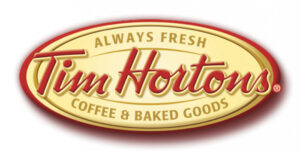
Building Emotional Connection:
Tim Hortons’ branding goes beyond aesthetics; it taps into the emotions of its customers. Catchy slogans like “Double Double” emphasize the quality and freshness of the products, appealing to Canadians’ appreciation for genuine experiences. Furthermore, featuring real employees and customers in advertising campaigns adds a layer of authenticity and relatability, creating a sense of community and belonging.
Championing Canadian Values:
Tim Hortons’ strong presence in Canada extends beyond just its physical locations. The brand is deeply intertwined with Canadian culture and values, often sponsoring national sports and events. This association reinforces the perception of Tim Hortons as a truly Canadian brand, fostering pride and loyalty amongst Canadians who see the company as a reflection of their own identity.
Through this strategic use of branding, Tim Hortons has successfully cultivated a unique and powerful brand identity. By positioning itself as a “home away from home” and aligning itself with Canadian values, the company has built a strong emotional connection with its customers, securing its place as a beloved Canadian icon.
2. Product Offerings
Tim Hortons strategically tailors its product offerings to cater to a diverse range of customer preferences. This plays a crucial role in its overall marketing strategy, ensuring something for everyone and attracting a broader customer base.
Variety Beyond the Coffee Cup:
While coffee remains the cornerstone of Tim Hortons’ offerings, the company goes far beyond the standard cup. Its extensive menu features a wide array of beverages, including iced coffees, fruit smoothies, and frozen treats, catering to varying taste buds and temperature preferences. Baked goods like donuts, muffins, and cookies offer a sweet and satisfying complement, while breakfast items, sandwiches, and wraps cater to heartier appetites. This diverse selection caters to customers seeking a quick breakfast, a mid-afternoon pick-me-up, or a light lunch option.
Catering to Specific Needs:
Tim Hortons recognizes the growing demand for healthier options and dietary restrictions. The inclusion of Greek yogurt, fruit chills, and soup options demonstrates the brand’s commitment to catering to health-conscious consumers. Additionally, Tim Hortons offers customization options for its beverages, allowing customers to tailor their coffee or tea to their preferred taste and sweetness level. This flexible approach resonates with customers who appreciate personalized experiences.
By offering a diverse and adaptable product portfolio, Tim Hortons successfully positions itself as a one-stop shop for a variety of needs and preferences. This strategic approach contributes significantly to the brand’s marketing success, attracting and retaining a loyal customer base.
3. Promotions and Discounts
Tim Hortons leverages strategic promotions and discounts to strengthen brand loyalty and drive repeat purchases. Their approach caters to various customer segments and motivates them to return for more.
Creating Excitement and Engagement:
The iconic “Roll Up the Rim” campaign is a prime example. This annual February event injects excitement and anticipation into the customer experience. The thrill of rolling the rim to reveal prizes, ranging from TVs and gadgets to vehicles, keeps customers engaged and coming back for more. This not only boosts sales but also creates a shared experience that strengthens the brand’s connection with its customers.
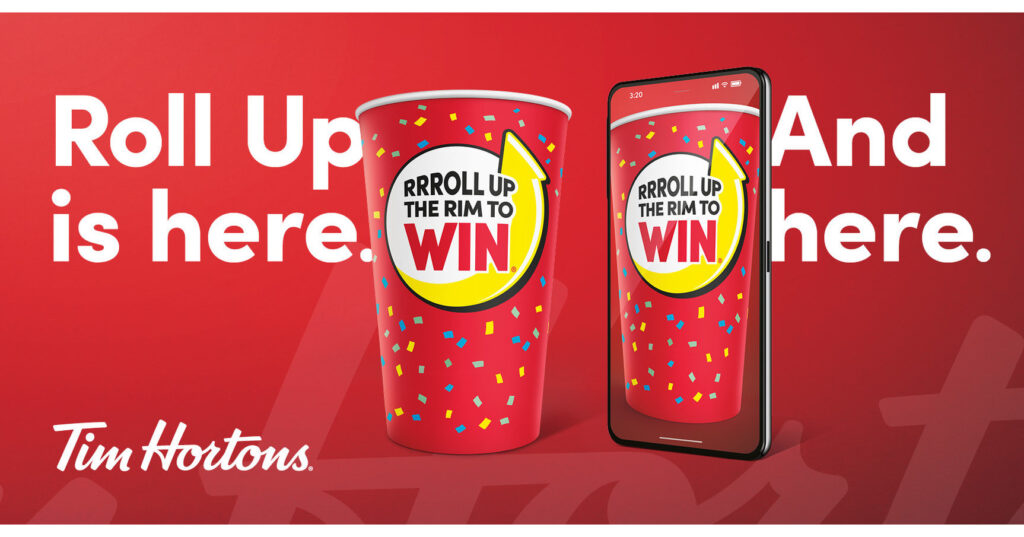
Rewarding Loyalty and New Customers:
Tim Hortons recognizes the importance of rewarding loyal customers and attracting new ones. The “Free Medium Cold Drink” offer for new Tims Rewards members is a prime example. This incentivizes app downloads and subscription to the loyalty program, promoting engagement and encouraging future purchases. Similarly, the “Key Worker Discount” acknowledges and rewards essential workers, fostering goodwill and building rapport with this important customer segment.
Tailoring Offers and Personalized Experiences:
Tim Hortons understands the impact of personalized experiences. Through the Tim Hortons Mobile App, customers can access exclusive member offers and coupons. This tailored approach enhances the customer journey, creating a sense of value and appreciation, leading to increased loyalty and repeat business.
By implementing a well-rounded strategy of exciting promotions, rewarding incentives, and personalized offers, Tim Hortons successfully drives customer engagement and loyalty, ensuring its continued success in the competitive coffee and snack market.
4. Loyalty Program
Tim Hortons’ loyalty program, aptly named “Tims Rewards,” plays a key role in their overall marketing strategy. This free program, based on visits and offering points for purchases, incentivizes customers to return and deepen their connection with the brand.
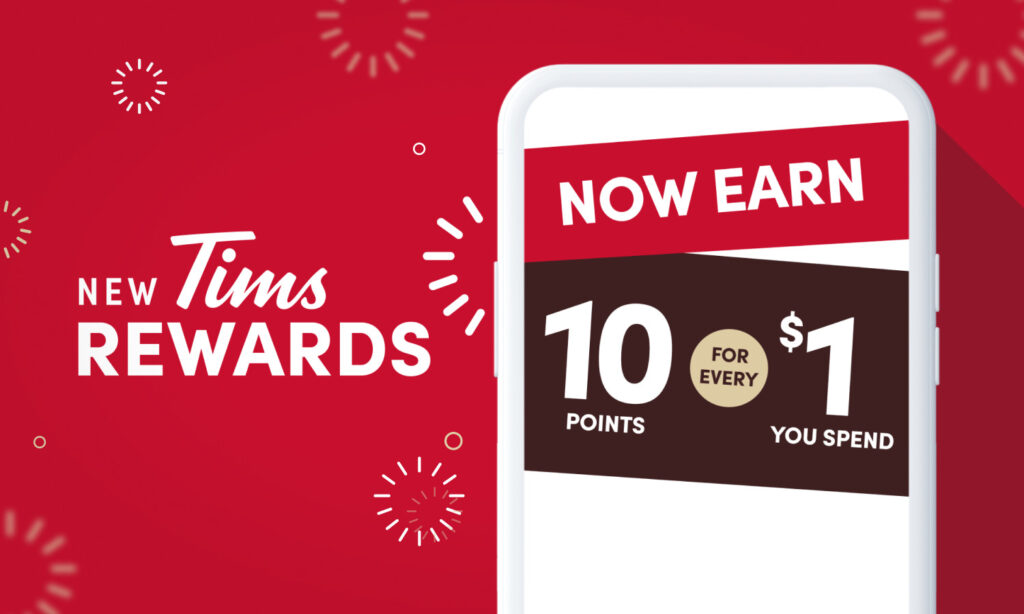
Rewarding Frequent Guests:
By earning points for every eligible purchase, customers are rewarded for their visits. This incentivizes them to choose Tim Hortons over competitors, knowing they’ll be recognized and rewarded for their loyalty. The points can be redeemed for a variety of food and drink options, making the program even more appealing.
Enhancing Brand Engagement:
Tims Rewards offers several ways to participate, including using a reusable card or the Tim Hortons app. This flexibility caters to various customer preferences and encourages engagement with the brand’s digital platform. Additionally, the ability to track points and manage rewards through the app fosters a more personalized and convenient experience, strengthening the customer relationship.
Building Long-Term Relationships:
Tim Hortons understands the importance of long-term loyalty. By allowing points to be saved for up to a year, the program encourages customers to continue visiting Tim Hortons, knowing their progress is preserved. This long-term perspective builds trust and strengthens the bond between the brand and its loyal customers.
Overall, Tims Rewards effectively leverages the power of loyalty programs to cultivate a dedicated customer base. By rewarding frequent visits and offering personalized experiences, Tim Hortons successfully fosters long-term relationships and cements its position as a beloved coffee and snack destination for Canadians.
5. Partnerships and Collaborations
Tim Hortons understands the power of partnerships to achieve strategic objectives. By collaborating with diverse entities, the company unlocks new opportunities for growth, strengthens its brand image, and amplifies its impact on various stakeholders.
Expanding Reach and Product Offerings:
Collaborating with celebrities like Justin Bieber allows Tim Hortons to tap into new markets and engage different demographics. The “Biebs Brew” and “Timbiebs” launch generated significant buzz and attracted younger audiences, expanding the brand’s reach. Similarly, partnerships with organizations like Dairy Farmers of Ontario help promote specific products and raise awareness about important initiatives.

Enhancing Brand Image and Building Relationships:
Tim Hortons’ partnership with actress Maitreyi Ramakrishnan for the “Dream Cookies” platform exemplifies how collaborations can bolster brand image and foster positive relationships. This campaign not only promoted a new product but also aligned Tim Hortons with a well-respected figure, enhancing the brand’s image and resonating with a wider audience.

Extending Impact and Social Responsibility:
Partnerships also allow Tim Hortons to contribute to social causes and positively impact communities. The TV commercial featuring Sidney Crosby and Eric Neilson not only reunited beloved hockey personalities but also highlighted the brand’s dedication to its hockey roots and community values. Similarly, partnering with organizations like coffee farmers demonstrates Tim Hortons’ commitment to ethical sourcing and sustainable practices.
Through strategic partnerships and collaborations, Tim Hortons effectively expands its reach, strengthens its brand image, and contributes positively to society. This multi-faceted approach ensures the brand’s continued success and allows it to remain relevant and impactful in a dynamic market.
6. Promotions and Advertising
Tim Hortons understands the power of blending various promotional and advertising strategies to captivate its target audience and solidify its position as a Canadian icon. Here’s how they achieve this:
Creating Excitement and Engagement:
The iconic “Roll Up the Rim” campaign is a prime example. This annual event injects excitement and anticipation into the customer experience. The thrill of rolling the rim to reveal prizes, ranging from free coffee and donuts to cars, keeps customers engaged and coming back for more. This not only boosts sales but also creates a shared experience that strengthens the brand’s connection with its customers.
Leveraging Emotion and Identity:
Tim Hortons’ partnership with celebrities like Shawn Mendes taps into the emotional connection people have with their favorite stars. These partnerships create memorable and impactful ads that resonate with fans and build brand affinity. Additionally, the focus on “Canadian identity” in their advertising strategy reinforces the brand’s roots and evokes feelings of patriotism, pride, and belonging among Canadian customers.
Connecting with Local Communities:
Tim Hortons recognizes the importance of tailoring its marketing efforts to specific regions. By creating targeted campaigns that resonate with local communities, the brand fosters a sense of closeness and relevance. This localized approach builds trust and strengthens relationships with customers on a personal level.
Embracing Purpose and Digital Engagement:
Tim Hortons’ use of purpose-based marketing goes beyond just selling products. By aligning itself with meaningful causes and initiatives, the brand connects with customers on a deeper level and demonstrates its commitment to social responsibility. Additionally, the focus on digital engagement through improved drive-thru experiences, mobile ordering, and loyalty programs enhances customer convenience and fosters ongoing interaction.
Tim Hortons’ multi-faceted promotional and advertising strategy has proven highly effective in increasing brand loyalty and repeat purchases. By creating excitement, connecting with emotions, embracing local communities, and integrating digital engagement, the brand has solidified its position as a beloved Canadian icon that resonates deeply with its customers.
7. Community Engagement
Tim Hortons, a brand deeply rooted in its communities, goes beyond selling coffee and donuts. Their unwavering commitment to giving back is evident in their diverse community engagement initiatives, solidifying their position as a socially responsible and caring brand.
From Camps to Coffee Farms, Making a Difference:
The Tim Hortons Children’s Foundation, operating seven summer camps across North America, provides underprivileged youth with transformative experiences that enrich their lives. Similarly, the Timbits Minor Sports Program encourages participation in sports for hundreds of thousands of young people annually, fostering healthy lifestyles and promoting teamwork.
Extending their impact beyond local communities, Tim Hortons’ “Tims Coffee for Communities” program directly improves the lives of coffee farmers and their families. This program focuses on sustainable practices and supports the development of communities where Tim Hortons sources its coffee. Additionally, the “Tim Hortons Coffee Partnership” specifically addresses the needs of disadvantaged communities involved in coffee production.
Beyond Donations, Building Relationships Through Shared Experiences:
Tim Hortons goes further than mere financial contributions. Their sponsorship of youth hockey programs and support for the Canadian military demonstrates their dedication to fostering a sense of community and promoting shared values. These initiatives create opportunities for engagement, strengthen relationships with local communities, and build lasting bonds of trust and appreciation.
Through their multifaceted community engagement efforts, Tim Hortons has earned a reputation as a brand that genuinely cares. By investing in the well-being of children, supporting youth activities, promoting sustainable practices, and honoring those who serve, Tim Hortons has become an integral part of the communities it serves, solidifying its role as a true Canadian icon.
Tim Hortons’ marketing strategy is a testament to the power of combining effective marketing tactics with a genuine commitment to community and social responsibility. By leveraging a diverse mix of strategies, including exciting promotions, strategic partnerships, and impactful community engagement initiatives, Tim Hortons has successfully cemented its position as a beloved Canadian icon. This winning formula, built on a foundation of quality products, warm hospitality, and a deep connection to its customers, ensures that Tim Hortons will remain a thriving force in the coffee and quick-service restaurant industry for years to come.
Marketing Mix of Tim Hortons
The marketing mix, often referred to as the 4Ps, is a fundamental framework in marketing that includes four key elements: Product, Price, Place, and Promotion. Let’s delve into each of these elements in the context of Tim Hortons:
1. Product
-
- Core Products: Tim Hortons is primarily known for its coffee and baked goods. Their core products include a variety of coffee blends, donuts, muffins, bagels, and breakfast sandwiches.
- Diversification: Over time, Tim Hortons has diversified its menu to include healthier options, such as salads, wraps, and soups, catering to a broader customer base and addressing changing consumer preferences.
2. Price
-
- Affordability: Tim Hortons positions itself as an affordable option, making its products accessible to a wide range of consumers. The pricing strategy is often competitive within the fast-food and coffee industry.
- Value Combos: The company offers value combo meals, bundling popular items together at a slightly discounted price, encouraging customers to purchase more items in a single transaction.
3. Place
-
- Global Presence: Tim Hortons has an extensive network of locations, not only in Canada but also internationally. The company strategically places its outlets in high-traffic areas such as shopping centers, airports, and busy urban locations to maximize visibility and accessibility.
- Drive-Thru and Takeout: Recognizing the importance of convenience, many Tim Hortons locations are equipped with drive-thru facilities, allowing customers to quickly purchase and enjoy their products on the go.
4. Promotion
-
- Advertising: Tim Hortons employs a mix of advertising channels, including television, radio, print, and digital media, to promote its products and brand. Advertisements often emphasize the quality of their coffee and the freshness of their baked goods.
- Promotional Campaigns: The company runs seasonal and event-specific promotional campaigns to create excitement and attract customers. These campaigns may include limited-time offerings, discounts, and themed products.
- Loyalty Programs: Tim Hortons has a loyalty program, such as the Tim Hortons Rewards program, which encourages repeat business by offering perks, discounts, and rewards to loyal customers.
- Community Engagement: Building on its Canadian heritage, Tim Hortons engages in community-oriented promotions and sponsorships, supporting local events, sports teams, and charitable initiatives. This fosters a positive brand image and strengthens ties with local communities.
In summary, Tim Hortons carefully balances the four elements of the marketing mix to deliver a comprehensive and customer-centric approach. By offering a diverse product range, maintaining affordable pricing, ensuring widespread accessibility, and implementing effective promotional strategies, the company strives to meet the needs and preferences of its diverse customer base.
Also Read: Decoding KFC’s Mouthwatering Marketing Strategies
To read more content like this, subscribe to our newsletter
